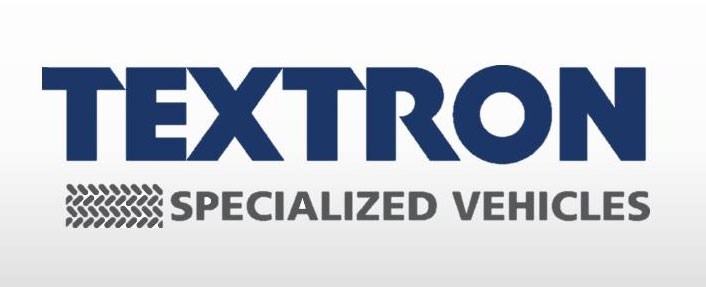The small, task-oriented vehicle (STOV) industry was rocked last week by the announcement that Textron had designated Scott Ernest, head of the company’s Aviation Division, to replace Kevin Halloran, as head of Textron Specialized Vehicles (TSV). Evidently, the TSV division's poor performance over several quarters finally resulted in a top management change.
Textron's reorganization efforts were on the right track, but…
 When the TSV division was formed several years ago, the objective of putting the variety of small, task-oriented vehicles under a single organizational umbrella made a lot sense. The idea of building a horizontal organization with semi-independent business units, coordinated at the top with corporate oversight for planning and strategy, has been successfully implemented by many companies. The key to success is in the word and in the deed of implementation. Here is where difficulties arose.
When the TSV division was formed several years ago, the objective of putting the variety of small, task-oriented vehicles under a single organizational umbrella made a lot sense. The idea of building a horizontal organization with semi-independent business units, coordinated at the top with corporate oversight for planning and strategy, has been successfully implemented by many companies. The key to success is in the word and in the deed of implementation. Here is where difficulties arose.
My colleague at Small Vehicle Resource (SVR), Marc Cesare, puts it rather boldly in this way in an e-mail to me:
"I think it (the management change) implies that if your business…drags down the company's quarterly results you [are in trouble]. I think there is more than a quarter's worth of problems. They moved the guy (Scott Ernest) who led their largest business segment over to take over this business. I think this means two things. One, they need someone who is effective to go in and clean up a mess, and two, the new guy is probably being groomed as a possible successor for CEO of the entire company."
Marc goes on to compare acquisition strategies of Polaris and TSV:
"The difference between Polaris and Textron is that Polaris…acquired the leading brands when they made acquisitions in this space. Arctic Cat was really a third tier brand, maybe second tier brand, not leading in either the recreation segment or the work segment. The Bad Boy Buggy acquisition wasn't great either."
Slow growth in a maturing industry (as currently defined)
Compounding the implementation issues, as noted, is the fact that most of the market segments in the STOV industry are maturing and experiencing slow growth. Even the vaunted Polaris, with its incredible record of growth, disclosed the fact, in its last quarterly earnings report, that, indeed, overall industry growth is negligible. We at SVR have been pointing out in our last two major, strategic reports that even the off-road utility and recreational market was slowing and that the glory days of double-digit growth—for the overall market and probably for most of its participants—were over. And, of course, everyone knows that the golf car market is slowly declining.
Into this stagnating business environment TSV made its move to become a big player. Growth can hide a plethora of missteps in planning and execution, but if its no- or slow-growth, the warts become highly visible. The battle for position in the industry comes down to gaining market share, and that in turn, spins around distribution and service. Distribution can expand your market; service assures you maintain it.
Growth requires a new vision
So, are there growth opportunities for the big three companies we associate with golf cars and which have, viz., Textron, moved into adjacent markets? I believe the answer is, yes, but a new vision is needed. (By the way, no need to worry about your E-Z-GO product, or the Cushman work vehicles. You'll still get the solid performance you've been used to over the years.)
The growth vehicle (pardon the expression) will, however, revolve around issues of urban mobility. Small vehicle solutions to the problems of congestion and pollution are cropping up around the world, although mostly in Europe, initiated quite often by start-ups. These vehicles, as they are developed, will have a profound effect on the way we navigate in and out of our gated communities, adding more efficient and more powerful electric motors, innovative controls, and vastly improved batteries for greater distance. These are products and components would not be specifically developed for the STOV industry as we now know it, because the market is too small to provide the necessary incentives. Once fixed on the much broader market of urban mobility and individualized transportation as a service, the time and investment for such new products becomes increasingly available.
Is there a place for the big three in the urban mobility space?
The answer to that is, yes, but, as noted above a new strategic vision is needed. Urban mobility startups don't need a lot of encouragement. They have the vision and the enthusiasm, and have demonstrated the ability to attract the attention of venture capital firms. By comparison, you have the traditional golf car manufacturers headed by giant corporations, in the case of the big three, and, as far as I can see, are doing little, so far, to seize the urban mobility opportunity.
And look at the assets that could be brought to bear: Substantial capital and fund-raising power, electric drive train technology and expertise, highly efficient manufacturing capability, sophisticated fleet management systems, and extensive dealer networks that could both sell product and provide maintenance services. Will the management change at TSV signal a new direction? We shall see. And it only takes a decisive step by one major player to bring a stampede of change throughout the industry.